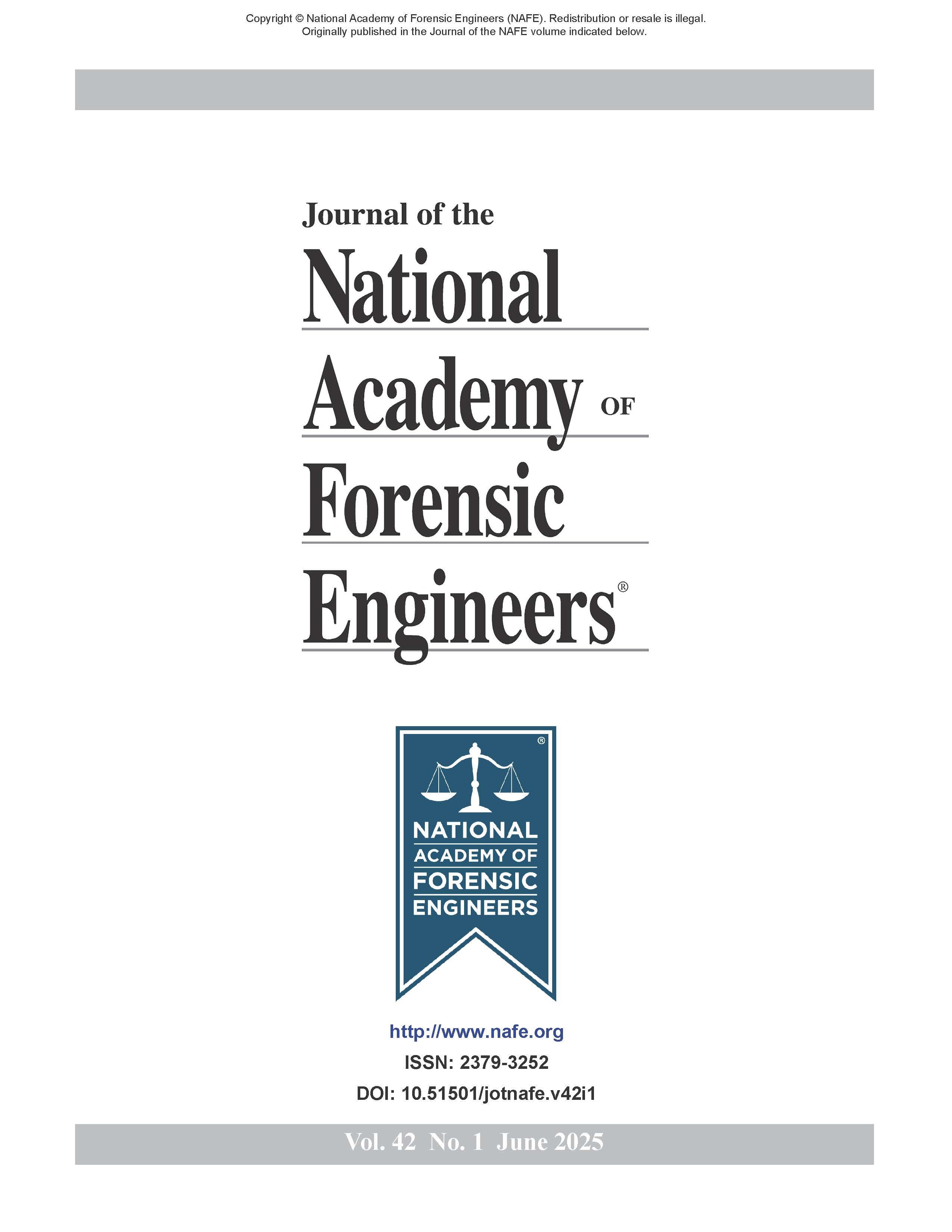Using Ground Penetrating Radar Techniques in Forensic Structural Engineering
DOI:
https://doi.org/10.51501/jotnafe.v42i1.971Keywords:
Ground penetrating radar, GPR, non-destructive testing, NDT, structural dmage, reinforced concrete, soils, forensic structural engineeringAbstract
One of the most powerful non-destructive testing methods in forensic structural engineering is ground penetrating radar (GPR). It is utilized to detect subsurface features such as rebar, voids, and corrosion in concrete. It is also helpful in investigating differential settlements in structures by identifying voids and anomalies in sub-surface soils that can cause structural instability. GPR works by emitting electromagnetic waves that reflect off materials with varying electrical properties, producing 2-dimensional images or profiles of the subsurface. This paper explores the application of GPR techniques in gathering important structural data and identifying subsurface anomalies and defects. Additionally, it also presents case studies from real-world forensic engineering investigations that demonstrate the use of GPR to diagnose structural defects and prepare repair solutions while minimizing project costs. The challenges and limitations of GPR are also discussed. In summary, GPR is an invaluable tool engineers can use to assess the structural integrity and design without damaging the structure.
Additional Files
Published
How to Cite
Issue
Section
License
Copyright (c) 2025 Journal of the National Academy of Forensic Engineers

This work is licensed under a Creative Commons Attribution-NoDerivatives 4.0 International License.
All rights © Journal of the National Academy of Forensic Engineers.
Full statement regarding the author's license of copyright to the NAFE is shown on the Copyright section of the Submissions Page.






